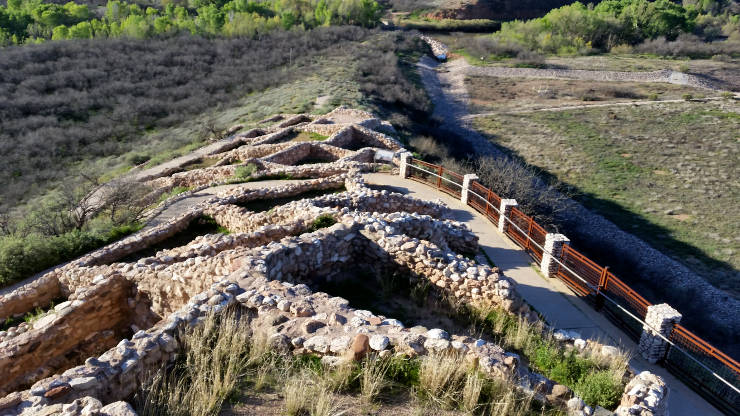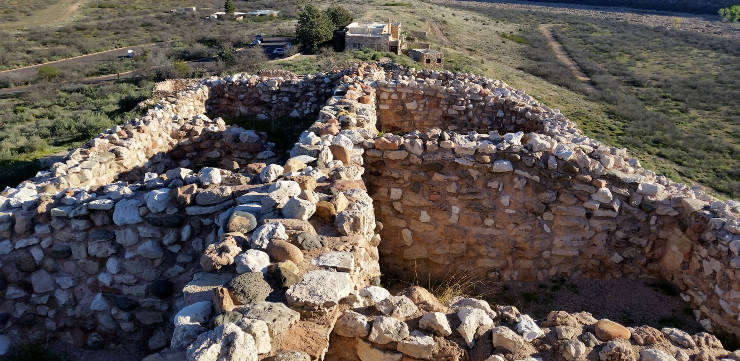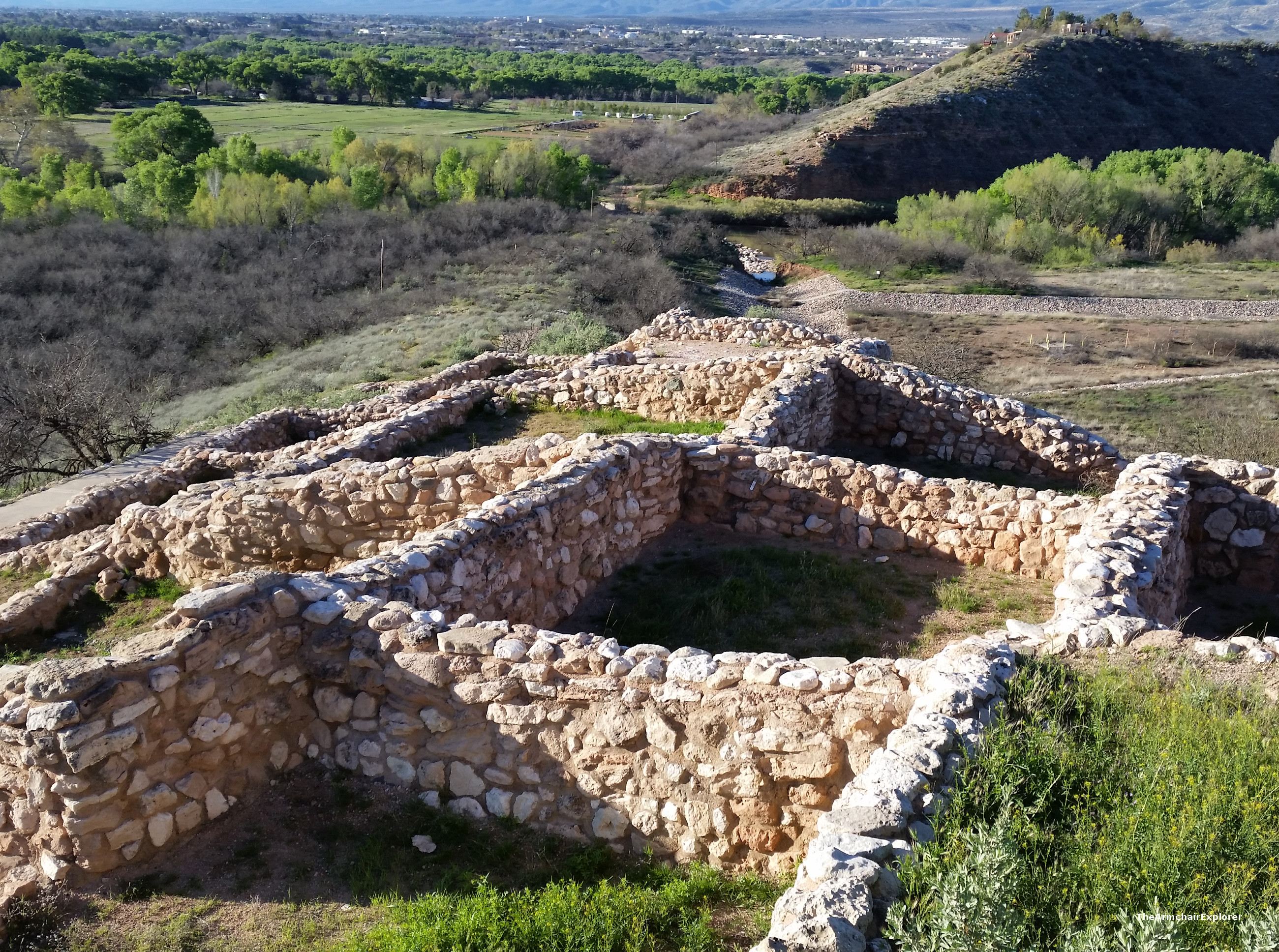Tuzigoot

Looking south from the top of Tuzigoot
Built by the Sinagua people beginning around 1000 CE, Tuzigoot grew to a total of about 110 rooms. Many of those rooms were on the upper stories of the stacked-masonry structure. The Sinagua were experts at living in a dry area, growing plentiful crops and running a trading empire across thousands of square miles of northern Arizona and southern Utah.
It was around 1060 CE when the Sunset Crater volcano began spewing lava and ash to the north. Many of the folks from that area moved south to survive those natural fireworks. A lot of folks stopped at places in between (like Wupatupqa) but some probably made it south to Tuzigoot. Life at Tuzigoot must have been good for them because the pueblo was occupied up until about 1400 CE, well into the time of the drought up north that forced many of the people out of the area and into Zuni, the pueblos of the Rio Grande and the Hopi mesas.
Tuzigoot is just south of the Mogollon Rim, at an altitude where it's warm in winter and hot in summer. At the northern edge of the Sonoran Desert, there are several perennial streams that flow south out of the Mogollon uplands to the Verde River, creating strips of riparian habitat in what would otherwise be the typical juniper-and-creosotebush landscape of central Arizona. Between the rolling hills and open areas of juniper, palo verde, ocotillo and ironwood are corridors of cottonwoods and sycamores shading willows, cattails and bulrushes.
One of the crops grown at Tuzigoot was a cotton native to South America. Excavation of the rubbish mounds of the pueblo yielded some beautiful samples of the cotton cloth they were weaving and wearing long before the Spanish arrived. Some of the woven baskets found indicate the Sinagua were also master basket makers. In the Visitor Center you'll find exhibits containing many of the thousands of artifacts found at Tuzigoot when the site was excavated and stabilized back in the 1920s and 1930s.
The first Europeans arrived in the Verde Valley in the late 1500s. The site at Tuzigoot had already been abandoned but was still an impressive sight. In those days, this part of the Verde Valley was an area of slow moving water, spread out across sloughs and marshes along the floor of the valley. In places, the water flow was a mile or more wide. This was an almost tropical marshland filled with lush vegetation that provided a lot of different habitats for many species of birds and mammals. In those days, even parrots lived and thrived here.
Since then the area has become much drier, although a sample of the old landscape still exists in the Tavasci Marsh, adjacent to the pueblo ruins at Tuzigoot. Tavasci Marsh is named for a pioneer family that settled here and began a dairy operation back in the days of the big local copper mines. To provide more grazing land without impacting the mine site, some of the marshland was drained.
These days, Tavasci Marsh is managed as a wetland designated as an "Important Bird Area" by the Audubon Society. As less than 5% of the original wetlands of Arizona still survive after the onslaught of the invading European presence, this is an important area to preserve. But if you explore the ruins at Tuzigoot, realize it was the wetlands and the water flowing through them that made it possible for the Sinagua people to flourish here. The barren and desert-like countryside you see around you these days wasn't always this way...

Looking north from the top of Tuzigoot

Today's countryside around Tuzigoot
Sites of the Ancients and approximate dates of occupation:
Atsinna : 1275-1350
Awat'ovi : 1200-1701
Aztec : 1100-1275
Bandelier : 1200-1500
Betatakin : 1275-1300
Casa Malpais : 1260-1420
Chaco Canyon : 850-1145
Fourmile Ranch : 1276-1450
Giusewa : 1560-1680
Hawikuh : 1400-1680
Homol'ovi : 1100-1400
Hovenweep : 50-1350
Jeddito : 800-1700
Kawaika'a : 1375-1580
Kuaua : 325-1580
Mesa Verde : 600-1275
Montezuma Castle : 1200-1400
Payupki : 1680-1745
Poshuouingeh : 1375-1500
Pottery Mound : 1320-1550
Puyé : 1200-1580
Snaketown : 300 BCE-1050
Tonto Basin : 700-1450
Tuzigoot : 1125-1400
Wupatki/Wukoki : 500-1225
Wupatupqa : 1100-1250
Yucca House : 1100-1275